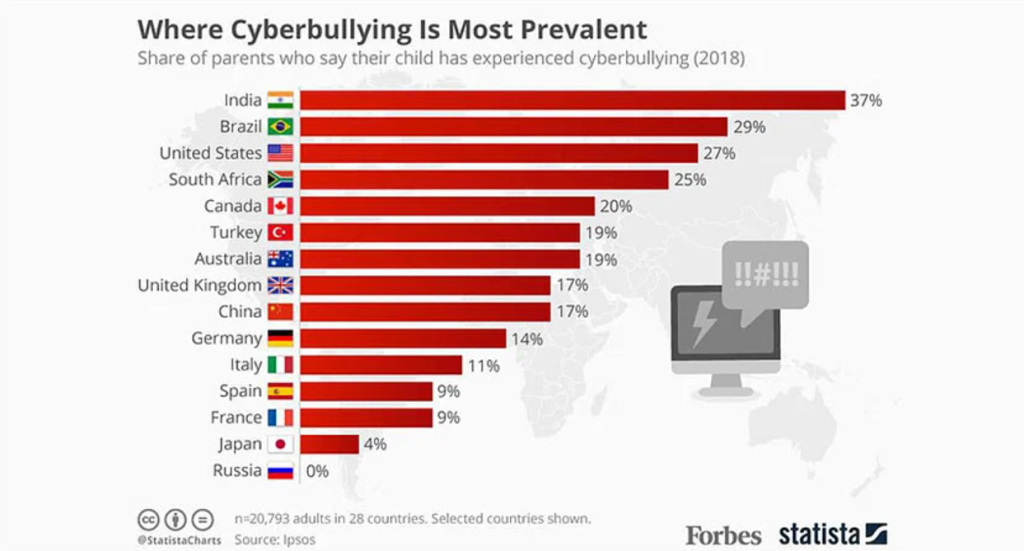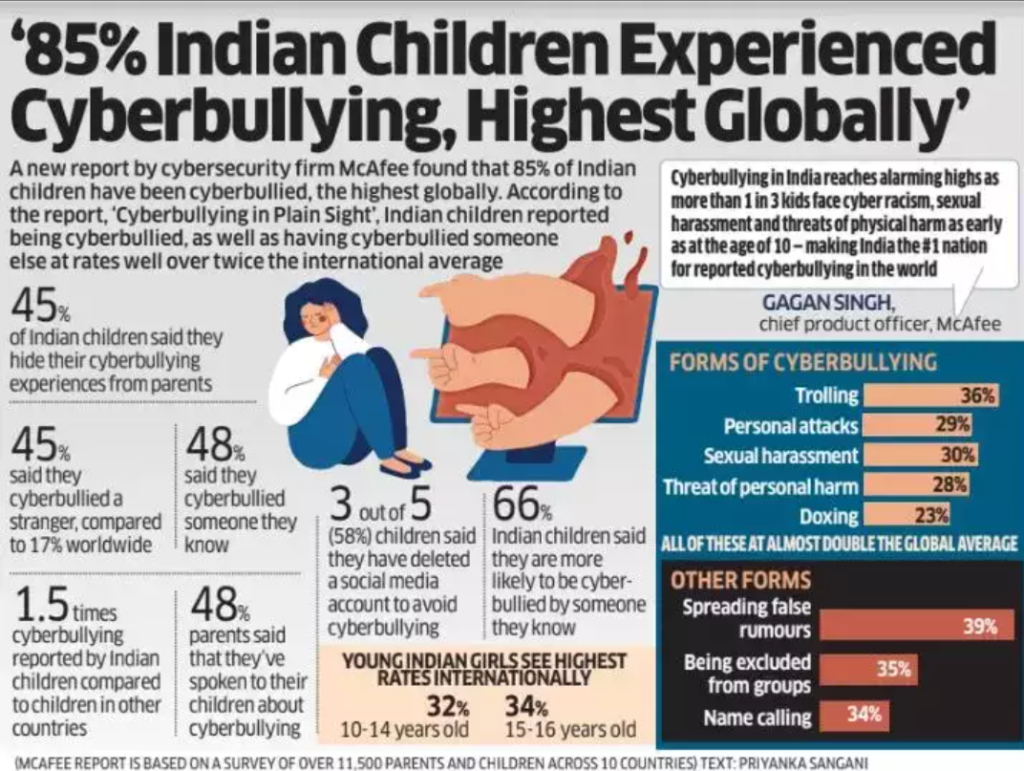CONTENTS
- A New Sense of Urbanisation
- Combatting the Rise of Cyberbullying
A New Sense of Urbanisation
Context:
The recent unveiling of two prominent institutions, namely the new Parliament building, symbolizing political authority, and the Ram temple, representing religious significance prompts speculation about whether future urban centers will prioritize religion over traditional drivers like work, industry, and modernization, which have characterized urban development for the past seventy years. The allocation of approximately ₹85,000 crore for infrastructure development in Ayodhya begs the question of whether religious centers will emerge as the new model for urban development in India.
Relevance:
- GS1- Urbanisation
- GS2- Government Policies and Intervention
Mains Question:
How have cities in India transitioned from colonial to modern? In the context of the recent unveiling of the Ram temple, discuss whether religious centers are emerging as the new model for urban development in India. (15 Marks, 250 Words).
Contrasting Colonial and Modern Cities:
- Over the past two centuries, urban development has been driven by rural to urban migration, supporting industrialization.
- The prevailing discourse distinguishes between colonial cities, such as metros, and advocates for the construction of new cities like Ayodhya, Kashi, and Pushkar.
- Colonial cities were established primarily for the transportation of goods, taxation, and exporting via ships.
- Cities also embody elements of modernism, not only in their architecture but also in various cultural, literary, and behavioral aspects.
- Examples abound of how modernist principles were integrated into India’s urban development model.
- Influential figures like Le Corbusier introduced innovative designs and modern features, while Habib Rahman, commissioned by Jawaharlal Nehru, emphasized modern technology and mass production techniques to create accessible, high-quality goods.
- Additionally, modern towns were typically designed with spaces dedicated to theater, culture, art, and recreation, underscoring their importance as hubs of cultural enrichment and leisure.
- The establishment of new towns served multiple purposes, including providing employment and housing for refugees, alleviating population pressure in existing urban areas, stimulating local economic development, and symbolizing India’s emergence as a modern nation, albeit with some shortcomings in design and inclusivity.
A New Angle to Cities:
- In the current era, a new concept of urbanization is emerging, challenging the traditional view of cities solely as centers of enlightenment, work, and residence.
- Now, cities are increasingly seen as centers for pilgrimages and spiritual journeys, leading to unexpected investments by large corporations in smaller towns like Ayodhya to develop their infrastructure.
- Consequently, India faces a new urbanization dilemma: reconciling a resurgence of faith with urban development, aligning cities and towns with the dominant religion rather than keeping them separate.
Investments and Unsystematic Development Initiatives:
- Following the post-colonial period, new towns emerged, some with industrial significance like Bhilai, Rourkela, and Chandigarh. However, despite these developments, metros continued to attract the largest influx of people and investments.
- Urban centers are typically ranked based on population and wealth generation, with colonial cities topping the list followed by regional urban centers.
- There’s a concerted effort to elevate regional pilgrimage cities to the status of colonial cities, as evidenced by the substantial investment in urban infrastructure in Ayodhya.
- While it’s beneficial to invest in regional cities for production, tourism, and other purposes, the lack of a coherent plan for directing such expenditures across India raises questions about the rationale behind investing in random projects in a disjointed manner.
- Projects like the new Central Vista, the Sardar Patel statue, the high-speed bullet train between Ahmedabad and Mumbai, and the Ayodhya temple raise concerns about the significant expenditure.
- It suggests that the Indian government aims to portray the nation as modern while maintaining connections to its ancient heritage, possibly signaling a reversal of the separation between religion and politics.
- This implies a shift toward considering religion as a social phenomenon rather than a purely private matter.
The State’s Role in Promoting Social Welfare:
- In a democratic society, the accumulation of capital and the generation of surplus should be aimed at promoting social welfare rather than religious interests, as seen during early Hindu revivalism.
- Social welfare means that surplus resources should be distributed to establish modern institutions, improve education, healthcare, and other social infrastructure, especially in a society where there’s a pressing need for investments in the social sector. (According to the World Bank, India will require $840 billion in urban infrastructure investments over the next 15 years.) However, the current trend seems to prioritize religious objectives over social welfare.
Conclusion:
This resurgence of religious focus is characterized by a significant centralization of finances and the segmentation of urban spaces along religious lines. A potential solution to this issue lies in decentralization, democratization, and fostering a more inclusive environment where citizens have equal rights and responsibilities.
Combatting the Rise of Cyberbullying
Context:
The internet has revolutionized social communication, especially for young people, creating a whole new realm of interaction. While technology has undeniably improved human lives, its negative aspects cannot be overlooked.
Relevance:
GS3-
- Basics of Cyber Security
- Media and Social Networking Sites
Mains Question:
Comment upon the rising incidents of cyberbullying in India. What is the legislative and institutional framework in this regard and what more needs to be done to counter it? (15 Marks, 250 Words).
Negative Effects of Technology:
- Technological advancements have led to a significant increase in health issues and have, paradoxically, isolated individuals from society instead of fostering connections.
- Gen Z, in particular, is experiencing sleep deprivation and is increasingly vulnerable to online bullying, known as cyberbullying. This form of bullying is on the rise, with more users falling victim to it.
Cyberbullying:
- Cyberbullying entails utilizing electronic communication to intimidate or threaten an individual.
- This can involve sending intimidating messages or posting harassing pictures or videos.
- Various social platforms like chat rooms, blogs, and instant messaging are utilized for cyberbullying.
- Examples of cyberbullying include spreading hurtful rumors or comments on an individual’s online updates, pictures, or videos, sharing embarrassing photographs without consent, excluding individuals from diverse backgrounds from online groups, and unlawfully accessing someone’s account to send unwanted or inappropriate messages.
- Cyberbullying is considered a punishable offense under the Information Technology Act of 2000 and the Indian Penal Code (IPC).
- The repercussions of cyberbullying can be severe, leading to depression, anxiety, and even fear of using technology. It can profoundly affect young minds, sometimes even escalating to threats of physical harm.
- Victims may struggle to focus and achieve personal goals due to the emotional toll it takes on them.
- Additionally, once something is posted online, it can remain indefinitely, exacerbating the impact of cyberbullying.
Cyberbullying in India:
- India holds the unfortunate distinction of having the highest cyberbullying rate globally, with over 85% of children reporting experiencing it. Additionally, Indian children were found to cyberbully others twice as frequently as children worldwide.
- Specifically, 46% of Indian children reported cyberbullying strangers, compared to 17% globally, while 48% admitted to cyberbullying individuals they knew, in contrast to 21% in other countries.
- The most common forms of cyberbullying reported in India were spreading false rumors (39%), exclusion from online chats or groups (35%), and name-calling (34%).


Legislative Framework Governing Cyberbullying in India:
- The Information Technology Act, 2000 (amended in 2008) is a legislative framework in India that addresses internet crimes and their corresponding penalties.
- Section 66(A), for instance, previously addressed the transmission of derogatory or abusive content through social media platforms but was deemed unconstitutional by the Supreme Court in 2015 due to its infringement on freedom of expression.
- Other sections such as 66(D), 66(E), and 67 outline penalties for cyberbullying actions, including misuse of personal information, dissemination of inappropriate content, or posting offensive material on social media platforms.
- The Indian Penal Code (IPC), India’s criminal law, similarly lacks explicit laws targeting cyberbullying. Nevertheless, several IPC sections can be applied to bullying offenses.
- For instance, Section 507 pertains to threats or coercion, Section 354(C) concerns the unauthorized photography of women, and Section 499 penalizes those who disseminate derogatory communications, which may encompass cyberbullying on social media platforms.
- The Ministry of Women and Child Development’s press release on ‘Digital Exploitation of Children’ underscores the punitive measures outlined in IPC sections 354A and 354D against cyberbullying and cyberstalking targeting women.
- Section 354D of the IPC defines stalking as persistent attempts by a person, despite a woman’s clear disinterest, to foster personal interaction or monitor her online activities, encompassing both offline and online stalking without distinction.
- The Indian government has acknowledged the issue of cyberbullying and has initiated measures to tackle it. The Ministry of Home Affairs introduced the Cyber Crime Prevention Against Women and Children (CCPWC) initiative with the objective of creating a safe online environment for children. This initiative offers a helpline and an online portal where children can report cyberbullying anonymously.
- Furthermore, the Ministry of Home Affairs has launched the National Cyber Crime Reporting Portal to facilitate the reporting of cybercrimes, including cyberbullying, by citizens and ensure swift action is taken.
Way Forward:
- It is crucial to educate children and their parents about the safe use of the internet and to ensure that everyone understands the potential risks associated with online connectivity.
- To improve the mental well-being of young people, it’s crucial to raise awareness about the challenges stemming from the digital realm.
- Currently, preventing cyberbullying is of utmost importance and requires constant monitoring and intervention. Staying updated on preventive measures and security protocols in the digital realm to better protect oneself online is the initial step.
- Implementing measures such as refraining from sharing personal information (such as home address, phone numbers, and banking details) online, avoiding posting personal photographs, and refraining from discussing private matters on social media can help mitigate risks.
- Additionally, individuals should avoid sharing internet passwords and account details and refrain from clicking on suspicious links or spam messages to reduce the likelihood of becoming victims of cyberbullying.
- Furthermore, parents play a vital role in educating their children about cyberbullying. Unlike traditional forms of bullying, which often occurred in school settings, cyberbullying poses unique dangers as it takes place online.
- Parents should utilize parental control applications to monitor their child’s online activities and foster open communication so that children feel comfortable discussing instances of bullying with them.
- It’s essential for parents to familiarize themselves with various online platforms, including social networking and chatting, to better understand the digital landscape and support their children effectively.
- In the era of artificial intelligence, it’s crucial to exercise caution to safeguard against cyber-attacks. Being bullied through digital means can have severe and potentially fatal consequences.
- While technology has undoubtedly simplified learning and earning opportunities for everyone, it’s equally essential to use it responsibly and judiciously.
Conclusion:
It’s imperative to avoid becoming a victim of cyberbullying. Treating all individuals encountered online with respect is the best defense against such harassment. Cyberbullying isn’t merely a form of amusement but a significant issue that can inflict lasting emotional and psychological damage.





